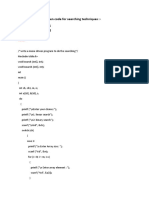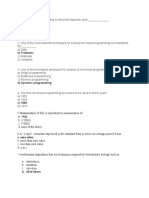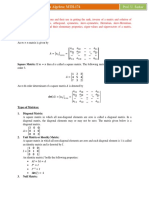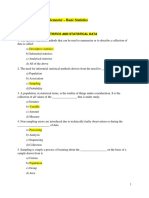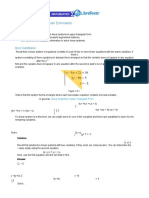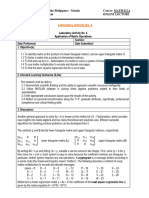100% found this document useful (3 votes)
251 views10 pagesIntroduction To Matrix/matrices
A matrix is an arrangement of elements in rows and columns, defined by its order, which is represented as m x n. There are various types of matrices including row, column, rectangular, square, zero, diagonal, scalar, identity, upper triangular, lower triangular, symmetric, and skew-symmetric matrices. Matrices are widely used in fields such as linear algebra, computer graphics, computer science, and physics for solving complex problems and representing data.
Uploaded by
Pawan nechlaniCopyright
© © All Rights Reserved
We take content rights seriously. If you suspect this is your content, claim it here.
Available Formats
Download as PPTX, PDF, TXT or read online on Scribd
100% found this document useful (3 votes)
251 views10 pagesIntroduction To Matrix/matrices
A matrix is an arrangement of elements in rows and columns, defined by its order, which is represented as m x n. There are various types of matrices including row, column, rectangular, square, zero, diagonal, scalar, identity, upper triangular, lower triangular, symmetric, and skew-symmetric matrices. Matrices are widely used in fields such as linear algebra, computer graphics, computer science, and physics for solving complex problems and representing data.
Uploaded by
Pawan nechlaniCopyright
© © All Rights Reserved
We take content rights seriously. If you suspect this is your content, claim it here.
Available Formats
Download as PPTX, PDF, TXT or read online on Scribd
/ 10






